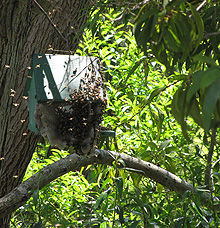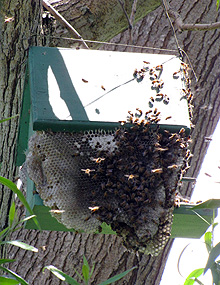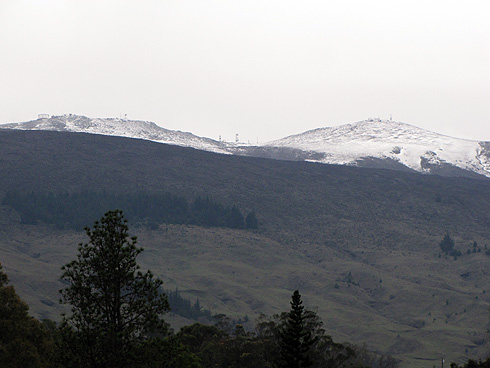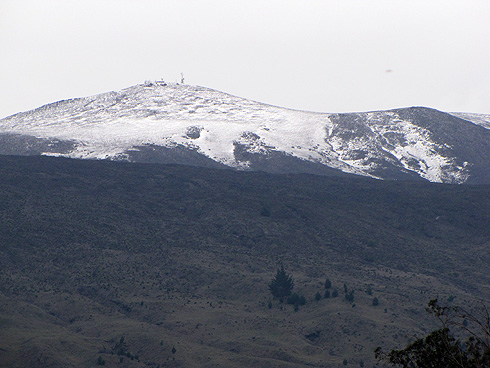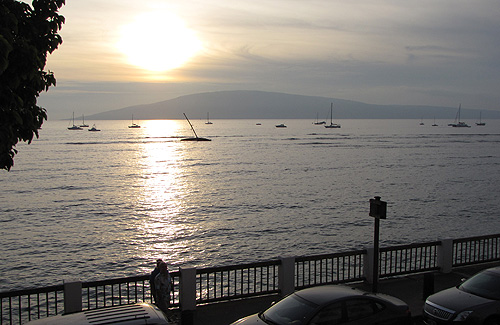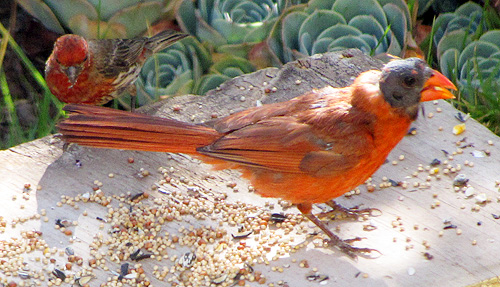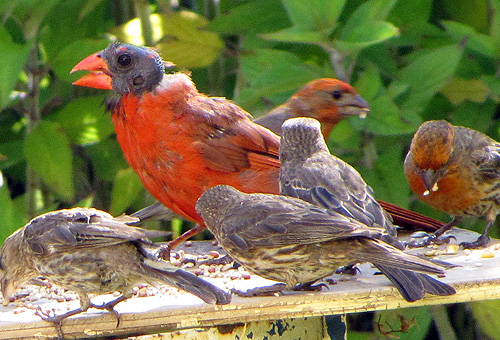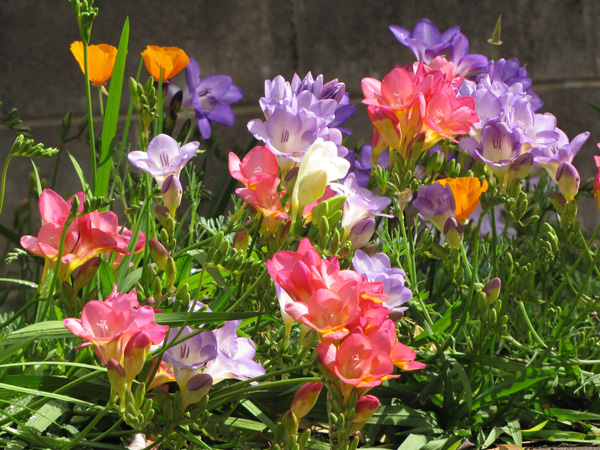A few days ago the husband asked, “Do you want to help me hike supplies into Kapalaoa Cabin for my volunteer service trip?â€
Kapalaoa Cabin, aka “The First Cabin†is located in Haleakala National Park, six miles in from Haleakala Crater rim. The trail starts at around 9800’ and descends to 7200’, with most of the descent in the first half of the hike. I’ve hiked in to and out from Kapalaoa Cabin many times, but never on the same day, so I figured, Why not?
It would give me a chance to take some pictures, and to try out the concept of hiking with two hiking poles.
I’ll admit that in my foolish youth I looked down on hiking poles—until a few years ago when a friend loaned me one on a long downhill slog. I was amazed at the difference it made and I’ve often used one since. But I never tried hiking with two poles.
The first thing I found out is that I cannot hike with a pole in each hand and a camera around my neck. I’ll have to look for a chest pack or something, because I can’t stand the camera banging against me. So I put one of the poles away until I got to the last, and roughest, part of the descent. At that point the camera went into the pack and I set out with both poles in hand.
By this time the husband was far ahead, since I’d been stopping to take pictures. So I set out at full speed—and with the help of those two poles I’m fairly sure I set personal records for the last leg of the descent, and for crossing the cinder flats that follow. Walking a trail through dry cinder is like walking through dry sand. The poles proved surprisingly useful in this situation, since they provided a solid point to push off.
We offloaded the supplies, and hiked out with little more than water and snacks in the packs. Overall, the trip went well—and today I have a good excuse not to work out!

Looking down Sliding Sands Trail from near the top. The trail follows the foot of the crater wall on the right of the photo.

The cinder flats, after the initial steep descent from the crater rim. This photo shows bracken fern on either side of the trail, but the fern soon gives way to a barren cinder area.
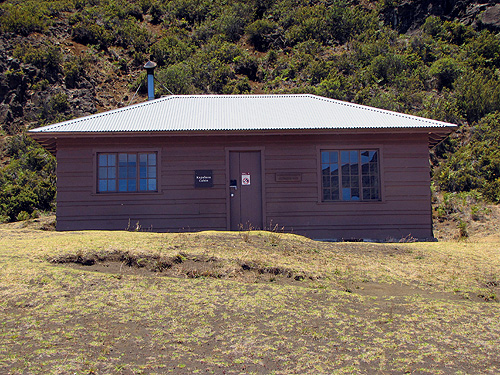
Kapalaoa Cabin, built in the 1930s by the Civilian Conservation Corps (CCC).
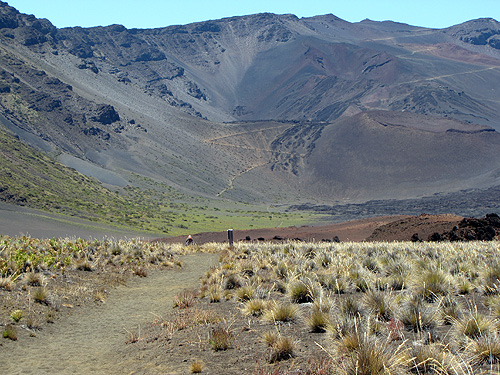
Oh yeah, we have to climb out again! This is a view of Sliding Sands Trail as it ascends to the crater rim.









